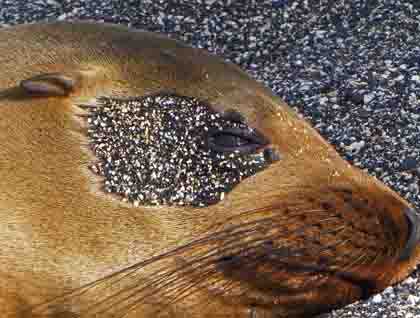This morning we were on the northwestern side of the Galápagos where the frigid waters of the deep equatorial counter-current rise up along the western edge of the undersea Galápagos platform. This upwelling phenomenon brings extraordinary conditions to the area, creating a very rich marine ecosystem, where whales and dolphins are commonly seen. Guests and staff were on deck early this morning searching for marine species while admiring the fascinating volcanic profile of Isabela Island.
After breakfast, we were already near Ecuador Volcano, a spectacular shield volcano that is bisected by the equator, and has collapsed into the ocean leaving fascinating views of the inner caldera wall and the caldera floor. The ship dropped anchor at the southern end of the caldera in an area called Punta Vicente Roca, where we had a spectacular Zodiac ride along the base of the imposing cliffs looking for penguins, cormorants, turtles, marine iguanas, and many sea birds. Later on, we went back to the ship to get ready for our deep water snorkel on the same area, where we were swimming with turtles, penguins and the always curious flightless cormorants.
During lunch time, we sailed south to reach Fernandina Island, another imposing shield volcano rising to nearly 5,000 feet in elevation, and one of the most active volcanoes in the world and the world's largest pristine island. Its flanks are streaked with innumerable fresh lava flows, most of them still black and lifeless.
However, our landing site at Punta Espinosa, over solid black slabs of "ropy" lava, reflects the abundant life supported directly by the rich seas bathing the coastline. Hundreds of marine iguanas were basking on the dark lava, while sea lions, penguins, flightless cormorants, herons, lava lizards, and Galápagos hawks coexist in this challenging and always fragile ecosystem, where the balance between predators and preys it’s a matter of live or dead.









